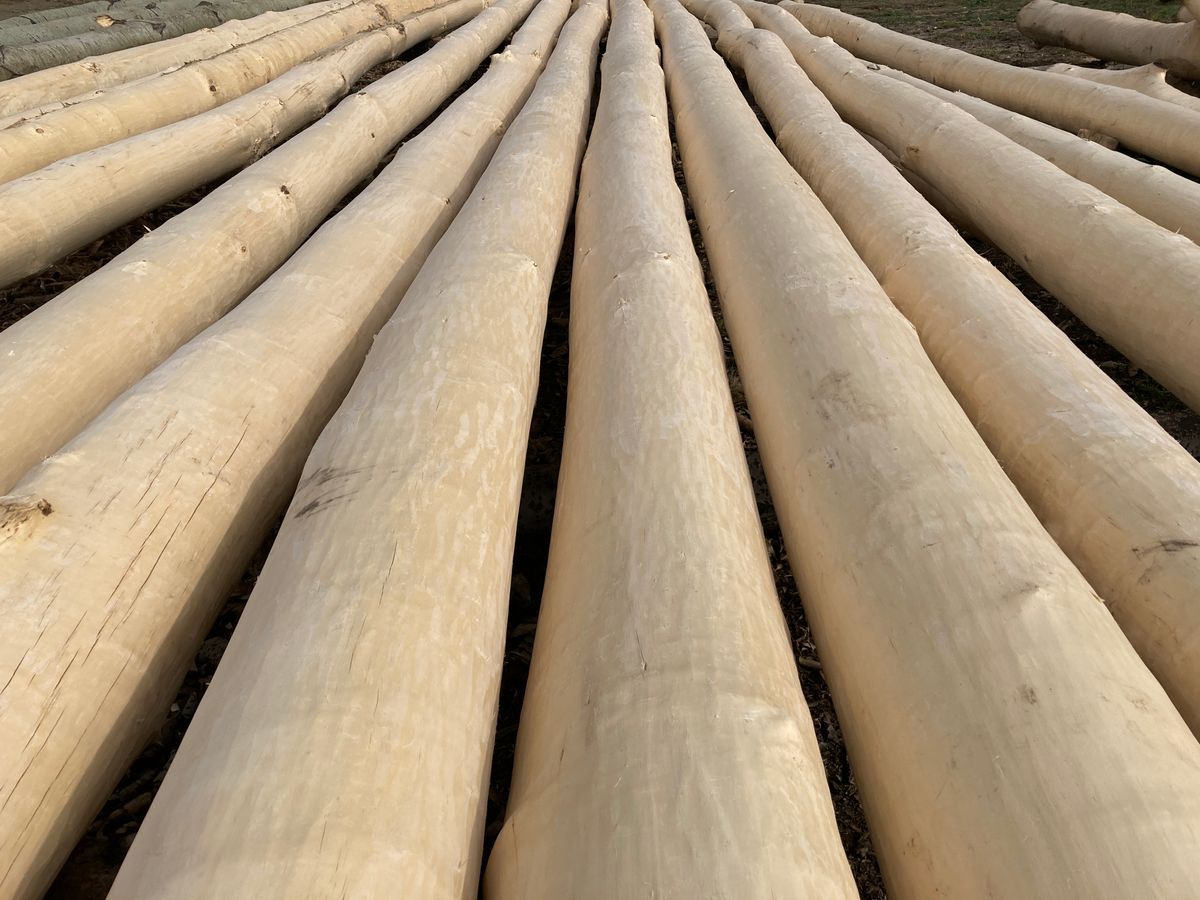And so the logging began. Our approach was fairly intuitive – initially we simply felled the trees that were closest to the sawmill, but slowly but surely we extended this radius. Both Simon and I had some experience in felling trees. We knew the basic techniques of determining the direction which the tree will likely take once it falls, sawing a wedge and following the necessary safety procedures. Nevertheless we approached our first few trees with a certain amount of trepidation and caution. I found it physically quite taxing and was very glad that Simon was around to do the bulk of the felling. We each had a Hasqvarna chainsaw. Simon had a more modern model which was light and very powerful. Mine was an old workhorse which I bought second hand in 1991! It was heavy and very cumbersome to use. I quickly traded it in for a much lighter streamlined Stihl. See details under Jig and Tools.
When we started logging it was still winter, so the trees were bare and easy to recognise for their suitability. We earmarked about 30 trees that were reasonably straight and had a base diameter of about 50cm. We calculated that we needed approximately 9 – 10 cubic meters of planks in total. Those planks that were earmarked for the flooring we cut to 40 mm thick. We calculate that we needed about 1,5 km of planks and factored in a wastage rate of about 40%. Those planks that were earmarked for the framing of the doors and windows were cut to 600mm thick, and those for possible cladding we cut to 25mm thick. The 6m long tracks of the Green Mamba determined the lengths of the logs that we could plank. The reason why we cut the lumber so thick was to accommodate for final planing and thicknessing.
